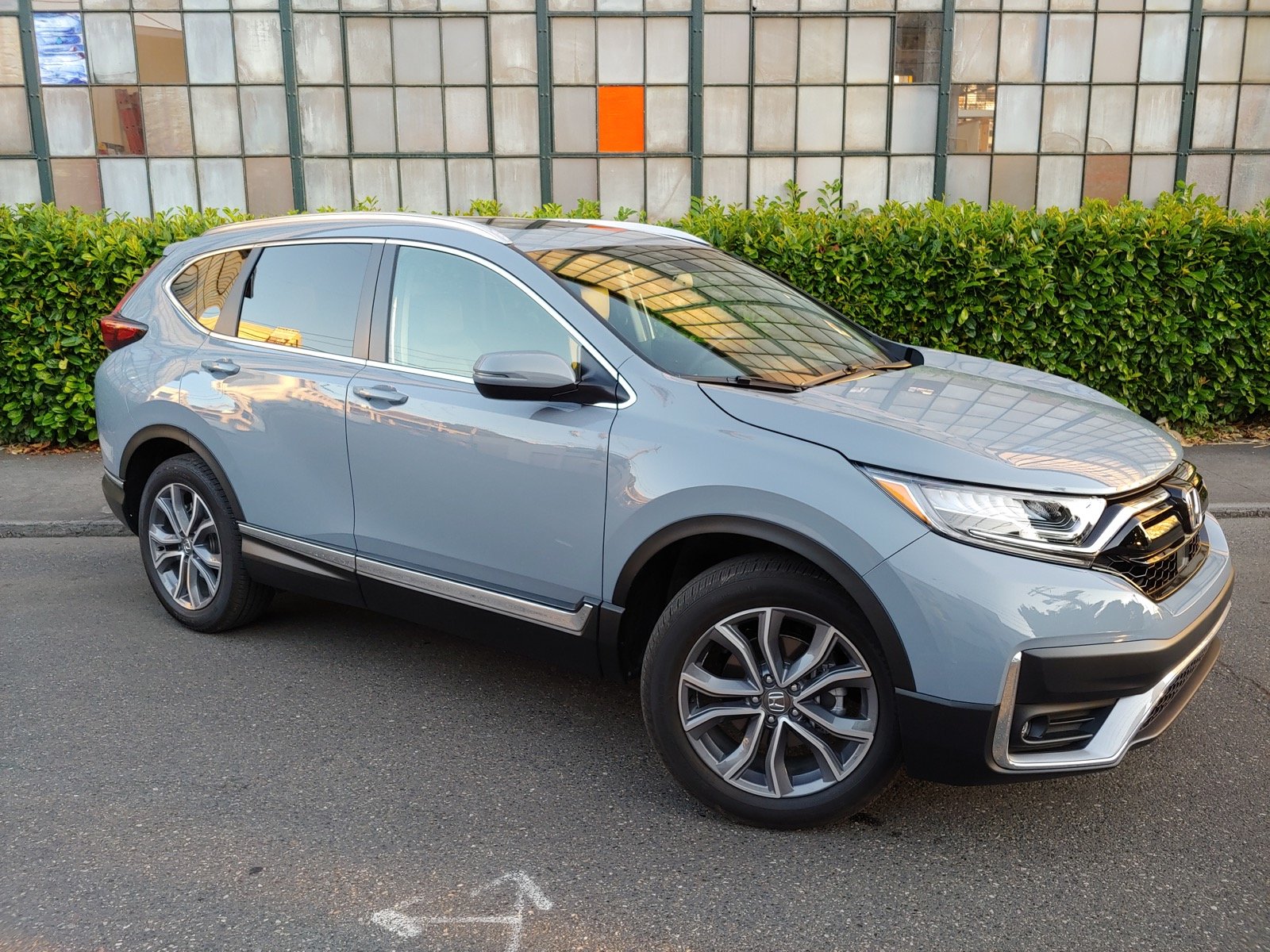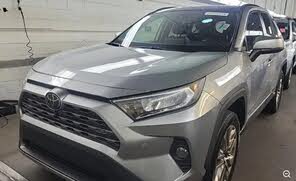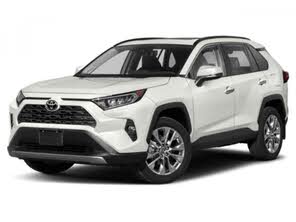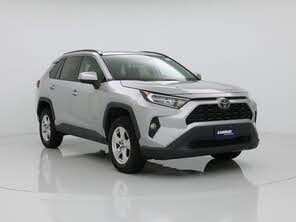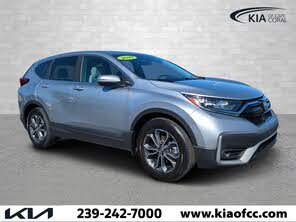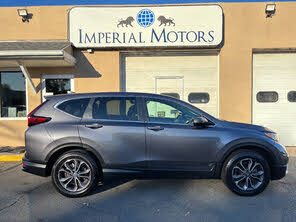2019 Toyota RAV4 vs 2020 Honda CR-V
Overview | |
MSRP$25,650 | MSRP$25,150 |
Listings1357 | Listings1506 |
Ratings & Reviews | |
User Reviews | User Reviews |
Expert reviews8.0 out of 10 | Expert reviews7.5 out of 10 |
Pros
Cons
| Pros
Cons
|
2019 Toyota RAV4 Reviews SummaryThere’s a reason small SUVs like the 2019 Toyota RAV4 are among the most popular vehicles on the new car market. Consider the RAV4 and its rivals, the Honda CR-V, Mazda CX-5, and Ford Escape—what do they have in common? To put it simply, these vehicles are asked to do it all. Daily commuter car? Check. Family-hauler to school, practice, and the mall? Check, check, and check. Road-trip vehicle? Yeah, that too. On top of it all, these vehicles have to be affordable, efficient, and reliable. Sales of traditional sedans have been dwindling, but if sedans could do as much as crossovers can, they would still be popular vehicles. The RAV4 is one of the oldest vehicles in the segment, and its story tells us how these small SUVs became so popular. The previous RAV4 was an extremely competent vehicle for Toyota, covering all the things we ask of compact SUVs. But the new 2020 RAV4 goes a few steps further. It has standout Tonka-truck styling, a surprisingly upscale interior, and something that it had lost since debuting more than two decades ago: a bit of off-road ability. We’ll see whether this makes it better than the RAV4 it replaces, and if it allows the 2020 RAV4 to stand out in a crowded small SUV market. | |
2020 Honda CR-V Reviews SummaryHonda’s compact SUV has been satisfying buyers for more than two decades, with more than five million CR-V’s sold. Such a legacy means the CR-V has long had its wrinkles smoothed out into a comfortable and capable crossover package that’s only downside may be its sheer inoffensiveness. This year’s model gets engine and safety upgrades, which improve fuel economy and help to make Honda’s bestseller an even better value. | |
No video found | |
Popular Features & Specs | |
Engine2.5L 203 hp I4 | Engine1.5L 190 hp I4 |
Drive TrainFWD | Drive TrainFWD |
Seating Capacity5 | Seating Capacity5 |
Horsepower203 hp @ 6000 rpm | Horsepower190 hp @ 5600 rpm |
MPG City26 | MPG City28 |
MPG Highway35 | MPG Highway34 |
Engine | |
Engine Name2.5L 203 hp I4 | Engine Name1.5L 190 hp I4 |
Torque184 lb-ft @ 5000 rpm | Torque179 lb-ft @ 2000 rpm |
Horsepower203 hp @ 6000 rpm | Horsepower190 hp @ 5600 rpm |
DrivetrainFWD | DrivetrainFWD |
Fuel Economy | |
MPG City26 | MPG City28 |
MPG Highway35 | MPG Highway34 |
Interior | |
Seating Capacity5 | Seating Capacity5 |
Safety | |
Front Crash Overall4 | Front Crash Overall5 |
Side Crash Overall5 | Side Crash Overall5 |
Dimensions & Capacity | |
Cargo Space37.6 cu ft | Cargo Space39.2 cu ft |
Curb Weight3370 lbs | Curb Weight3337 lbs |
Height67.0 in | Height66.1 in |
Length180.9 in | Length182.1 in |
Width73.0 in | Width73.0 in |
Wheelbase105.9 in | Wheelbase104.8 in |
Maximum Payload1240 lbs | Maximum Payload1358 lbs |
Number of doors4 | Number of doors4 |
Maximum Towing Capacity1500 lbs | Maximum Towing Capacity1500 lbs |
Overview | ||
MSRP | $25,650 | $25,150 |
Listings | ||
Ratings & Reviews | ||
User reviews | ||
Expert reviews | 8.0 out of 10Read full review | 7.5 out of 10Read full review |
Pros & cons | Pros
Cons
| Pros
Cons
|
Summary | There’s a reason small SUVs like the 2019 Toyota RAV4 are among the most popular vehicles on the new car market. Consider the RAV4 and its rivals, the Honda CR-V, Mazda CX-5, and Ford Escape—what do they have in common? To put it simply, these vehicles are asked to do it all. Daily commuter car? Check. Family-hauler to school, practice, and the mall? Check, check, and check. Road-trip vehicle? Yeah, that too. On top of it all, these vehicles have to be affordable, efficient, and reliable. Sales of traditional sedans have been dwindling, but if sedans could do as much as crossovers can, they would still be popular vehicles. The RAV4 is one of the oldest vehicles in the segment, and its story tells us how these small SUVs became so popular. The previous RAV4 was an extremely competent vehicle for Toyota, covering all the things we ask of compact SUVs. But the new 2020 RAV4 goes a few steps further. It has standout Tonka-truck styling, a surprisingly upscale interior, and something that it had lost since debuting more than two decades ago: a bit of off-road ability. We’ll see whether this makes it better than the RAV4 it replaces, and if it allows the 2020 RAV4 to stand out in a crowded small SUV market. | Honda’s compact SUV has been satisfying buyers for more than two decades, with more than five million CR-V’s sold. Such a legacy means the CR-V has long had its wrinkles smoothed out into a comfortable and capable crossover package that’s only downside may be its sheer inoffensiveness. This year’s model gets engine and safety upgrades, which improve fuel economy and help to make Honda’s bestseller an even better value. |
Video | No video found | |
Popular Features & Specs | ||
Engine | 2.5L 203 hp I4 | 1.5L 190 hp I4 |
Drive Train | FWD | FWD |
Seating Capacity | 5 | 5 |
Horsepower | 203 hp @ 6000 rpm | 190 hp @ 5600 rpm |
MPG City | 26 | 28 |
MPG Highway | 35 | 34 |
Engine | ||
Engine Name | 2.5L 203 hp I4 | 1.5L 190 hp I4 |
Torque | 184 lb-ft @ 5000 rpm | 179 lb-ft @ 2000 rpm |
Horsepower | 203 hp @ 6000 rpm | 190 hp @ 5600 rpm |
Drivetrain | FWD | FWD |
Fuel Economy | ||
MPG City | 26 | 28 |
MPG Highway | 35 | 34 |
Interior | ||
Seating Capacity | 5 | 5 |
Safety | ||
Front Crash Overall | 4 | 5 |
Side Crash Overall | 5 | 5 |
Dimensions & Capacity | ||
Cargo Space | 37.6 cu ft | 39.2 cu ft |
Curb Weight | 3370 lbs | 3337 lbs |
Height | 67.0 in | 66.1 in |
Length | 180.9 in | 182.1 in |
Width | 73.0 in | 73.0 in |
Wheelbase | 105.9 in | 104.8 in |
Maximum Payload | 1240 lbs | 1358 lbs |
Number of doors | 4 | 4 |
Maximum Towing Capacity | 1500 lbs | 1500 lbs |
The 2019 Toyota RAV4 had a distinctive look that turned heads with its bold and assertive design. It boasted a big, chunky exterior characterized by sharp edges, drawing inspiration from the Toyota Tacoma pickup. This aggressive and futuristic aesthetic conveyed a sense of robustness. The side-profile styling and taillights, which shared similarities with Toyota's luxury branch Lexus, accentuated this strong presence. The RAV4 integrated a character line that broke up the rear C-pillar. While this design choice was common among new vehicles, it often appeared as unnecessary clutter in monotone color schemes, though it made sense in two-tone options with contrasting roof colors.
In contrast, the 2020 Honda CR-V, a fifth-generation model introduced in 2017, offered a softer, more universally appealing look. Its curvy and car-like design closely resembled Honda’s sedan lineup and leaned more towards a station-wagon-like appearance. This model redefined modern family transportation with its sleek aesthetics. However, inside, the CR-V mixed upscale touches like wood-look trim and leather upholstery with less impressive low-quality plastics, reminding drivers it was an upgraded commodity car rather than a premium product.


















The 2019 Toyota RAV4 was powered by a 2.5-liter 4-cylinder engine across all trims, producing 203 horsepower and 184 pound-feet of torque. This engine was paired with an 8-speed automatic transmission, configured for either front-wheel drive (FWD) or all-wheel drive (AWD). Toyota offered two AWD variants: a base option and a more advanced torque-vectoring AWD for Adventure and Limited trims. While the engine offered adequate highway performance, it struggled in stop-and-go traffic due to its lack of low-end power, resulting in sluggish acceleration and noticeable noise. Although the RAV4 handled bumps comfortably, its steering was twitchy, and there was significant body roll, particularly in fast corners. The FWD RAV4 achieved an impressive fuel economy of 26 mpg city and 35 highway, while AWD models performed similarly with a combined 29.3 mpg.
In 2020, Honda simplified the CR-V lineup by exclusively offering a 1.5-liter turbocharged engine, producing 190 horsepower and 179 pound-feet of torque, paired with a continuously variable automatic transmission (CVT). Despite some CVTs' notorious sluggish response, the CR-V's engineers tuned it well, providing a responsive and quick drive, especially in Sport mode. The CR-V excelled with car-like handling, minimal body roll, and a light curb weight of 3,337 pounds for the FWD LX model. This lightweight construction contributed to its superior fuel efficiency, delivering 30 mpg combined for FWD models and 29 mpg combined for AWD versions—placing it at the class's top.
The 2019 Toyota RAV4’s cabin aimed for a balance between upscale aesthetics and practicality. Its clean design featured ample cargo space and spacious seating. The center stack pod contained climate controls, drive-mode controls, and a shifter thoughtfully designed to minimize space usage. Additional storage included a deep center console bin and a passenger-side dash tray. The rear seats offered 37.6 cubic feet of cargo space, expanding to 69.8 cubic feet when folded down—surpassing some rivals but falling short compared to the Honda CR-V and Subaru Forester.
The 2020 Honda CR-V exemplified Honda’s expertise in effective packaging. It provided a roomy interior comparable to the Volkswagen Tiguan's class-leading space, with excellent seating positions enhancing head and legroom. Clever storage solutions, such as a deep center console bin inspired by the Odyssey minivan and door pockets extending behind the lower panel, maximized practicality. The CR-V boasted a two-position load floor in the cargo area, providing flexibility between maximizing cargo space or creating a flat floor with the rear seats folded, offering a total of 75.8 cubic feet of storage.
The 2019 Toyota RAV4 came well-equipped, with the LE trim featuring a 7-inch touchscreen housing Toyota’s Entune 3.0 infotainment system, which was user-friendly and included Apple CarPlay. Higher trims added more amenities, such as multiple USB ports, a panoramic reversing camera, a 7-inch instrument panel display, a larger 8-inch infotainment screen, and an optional JBL premium stereo in the Limited trim. The layout was straightforward, with real dials for volume and tuning, combined with touchscreen functionality for other features. However, Android Auto was notably absent.
The 2020 Honda CR-V’s technology offerings revealed its age, particularly in the entry-level LX trim, which had a limited 5-inch screen. Higher trims offered a 7-inch touchscreen that felt outdated compared to competitors' larger options. The system lacked hard buttons, making it cumbersome to operate. Though it provided Apple CarPlay and Android Auto, these integrations felt secondary to the main system. Despite this, the CR-V included ample USB ports in the EX trim and above, with two high-powered ports in the backseat and a wireless phone charger in the Touring trim.
In terms of safety, the 2019 Toyota RAV4 included comprehensive standard features. This encompassed a full array of airbags, a reversing camera, traction control, a tire-pressure monitoring system, and Toyota Safety Sense 2.0. This suite added advanced technologies such as forward-collision warning, lane-departure warning, automatic high-beams, dynamic radar cruise control, traffic-sign detection, and Lane-Tracing Assist.
The 2020 Honda CR-V also prioritized safety, equipped with the “Honda Sensing” system across all trims. This included forward-collision warning with automatic emergency braking and pedestrian detection, road-departure mitigation, adaptive cruise control with lane-keeping assist, and automatic high beams. Higher trims featured additional blind-spot and cross-traffic monitoring. The CR-V achieved a five-star rating from the National Highway Traffic Safety Administration (NHTSA) in frontal and side crash tests and earned a Top Safety Pick from the Insurance Institute for Highway Safety (IIHS), although lower trims had lower-rated headlights.
CarGurus highlights
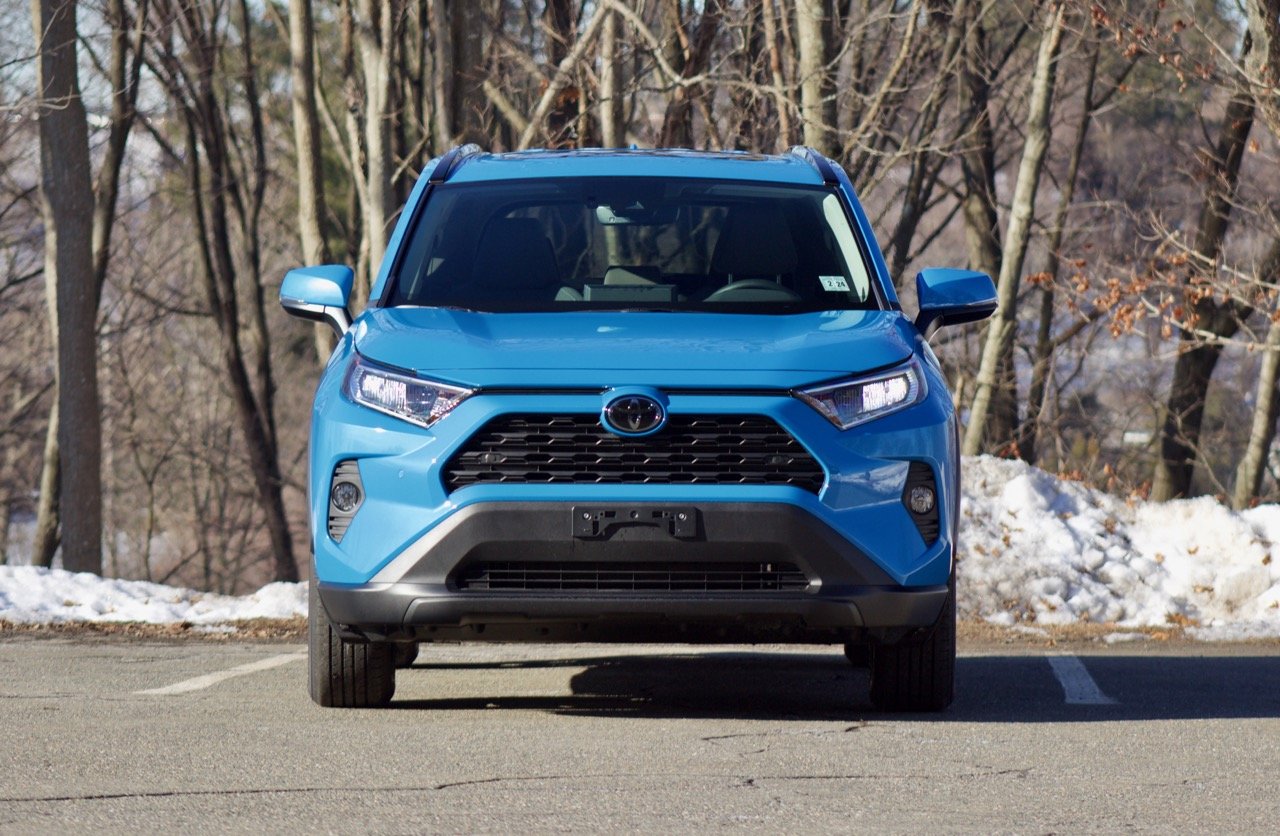
According to CarGurus experts, the overall rating for the 2019 Toyota RAV4 is 8.0 out of 10, while the 2020 Honda CR-V scores 7.5 out of 10. Both cars have their strengths, but the Toyota RAV4 edges out the CR-V with a higher rating. The RAV4’s advanced off-road capabilities, robust design, user-friendly infotainment system, and comprehensive safety features make it the better choice for most consumers.
Choose the 2019 Toyota RAV4 if:
- You value advanced off-road capabilities paired with excellent on-road performance.
- A user-friendly infotainment system with Apple CarPlay is a priority.
- You prefer a robust and aggressive design inside and out.
Choose the 2020 Honda CR-V if:
- You seek a spacious and well-packaged vehicle with clever storage solutions.
- Fuel efficiency and a smooth, car-like driving experience are critical.
- Safety is a top priority, with standard features offering comprehensive protection.
CarGurus highlights

According to CarGurus experts, the overall rating for the 2019 Toyota RAV4 is 8.0 out of 10, while the 2020 Honda CR-V scores 7.5 out of 10. Both cars have their strengths, but the Toyota RAV4 edges out the CR-V with a higher rating. The RAV4’s advanced off-road capabilities, robust design, user-friendly infotainment system, and comprehensive safety features make it the better choice for most consumers.
Choose the 2019 Toyota RAV4 if:
Shop Now- You value advanced off-road capabilities paired with excellent on-road performance.
- A user-friendly infotainment system with Apple CarPlay is a priority.
- You prefer a robust and aggressive design inside and out.
Choose the 2020 Honda CR-V if:
Shop Now- You seek a spacious and well-packaged vehicle with clever storage solutions.
- Fuel efficiency and a smooth, car-like driving experience are critical.
- Safety is a top priority, with standard features offering comprehensive protection.

By: CarGurus + AI
At CarGurus, our team of experienced automotive writers remain at the heart of our content operation, conducting hands-on car tests and writing insightful guides that are backed by years of industry experience. To complement this, we are harnessing AI to make our content offering more diverse and more helpful to shoppers than ever. To achieve this, our AI systems are based exclusively on CarGurus content, ratings and data, so that what we produce is both unique to CarGurus, and uniquely helpful to car shoppers.
